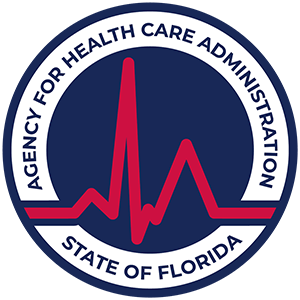The Fentanyl Awareness Day
Join the movement on Fentanyl Awareness Day. Learn about the dangers, prevention strategies, and community involvement in combating this crisis.
Understanding Fentanyl

Fentanyl is a powerful synthetic opioid that has become a significant concern in the realm of addiction. Understanding what fentanyl is and the dangers associated with illicit fentanyl is crucial in raising awareness and promoting informed decision-making.
What is Fentanyl?
Fentanyl is a synthetic opioid that is approximately 50 times stronger than heroin and 100 times stronger than morphine. It is primarily used medically for pain management in cases of severe or chronic pain. However, in recent years, it has gained notoriety as an illicit drug [1]. Illicit fentanyl is often produced in clandestine labs and distributed on the illegal drug market.
Dangers of Illicit Fentanyl
Illicit fentanyl is a significant factor contributing to the increasing number of drug overdose deaths in the United States. The potency of fentanyl poses a grave risk, as even small amounts can result in overdose and death. The presence of fentanyl in other illicit drugs, such as cocaine and counterfeit prescription opioids, has led to a surge in overdose deaths.
Illicitly manufactured fentanyl is primarily produced in foreign clandestine labs and smuggled into the United States, often through Mexico. It is then distributed across the country and sold on the illegal drug market. To increase the potency of other drugs, fentanyl is frequently mixed in, leading to unpredictable and potentially lethal outcomes. In some cases, counterfeit pills designed to resemble legitimate prescription opioids contain deadly doses of fentanyl, putting unsuspecting individuals at high risk of overdose.
According to the CDC, synthetic opioids, including fentanyl, are the primary driver of overdose deaths in the United States [3]. The increased availability and use of illicit fentanyl have contributed to a rise in overdose deaths across the country. Recognizing the dangers of illicit fentanyl and its impact on public health is a critical step in addressing the ongoing drug epidemic.
By understanding what fentanyl is and the risks associated with illicit fentanyl, individuals can make informed decisions and take necessary precautions to protect themselves and their loved ones. Education and awareness play a crucial role in combating the fentanyl crisis and working towards a safer and healthier society.
National Fentanyl Awareness Day
Observed on August 21st, National Fentanyl Awareness Day serves as a platform for raising awareness about the dangers of illicit fentanyl and commemorating the lives lost to fentanyl poisoning. This day is a coordinated effort by grassroots fentanyl awareness organizations and families impacted by fentanyl to educate the public about the devastating consequences of this drug.
Purpose of the Awareness Day
The purpose of National Fentanyl Awareness Day is to shed light on the widespread impact of illicit fentanyl across communities in the United States. Administrator Anne Milgram emphasizes the need for all Americans to participate in raising public awareness about fentanyl, as this crisis affects individuals from all walks of life. By dedicating a specific day to fentanyl awareness, it allows for a concentrated effort to educate the public, highlight the dangers of fentanyl, and encourage preventive measures.
Events and Initiatives
On National Fentanyl Awareness Day, various events and initiatives take place across the country to educate and engage communities. These activities aim to foster dialogue, provide resources, and promote understanding of the risks associated with fentanyl use. Examples of events and initiatives include:
By organizing events and initiatives on National Fentanyl Awareness Day, communities can come together to address the fentanyl crisis, increase knowledge about the dangers of illicit fentanyl, and provide support to those affected. It is through collaborative efforts that we can make a significant impact in preventing fentanyl-related harm and promoting healthier communities.
For additional resources and support related to addiction recovery and treatment, explore our articles on addiction recovery tools for sobriety and derry rehab center for drugs and alcohol.
Impact of Illicit Fentanyl

Illicit fentanyl, a synthetic opioid that is significantly stronger than heroin and morphine, has had a devastating impact on communities across the United States. Understanding the impact of illicit fentanyl is crucial in raising awareness and addressing the ongoing drug epidemic.
Rising Overdose Deaths
Illicit fentanyl is a significant factor driving the recent increase in drug overdose deaths in the United States. According to the DEA, illicitly manufactured fentanyl has largely supplanted heroin in the street supply due to its low cost of production. This has led to a surge in fentanyl-related fatalities.
In Ohio alone, there were a total of 3,579 fentanyl-related opioid deaths out of 3,651 overall opioid fatalities in 2023, highlighting the significant impact of illegal fentanyl in the state [5]. This alarming trend is mirrored in many other states across the country.
The devastating consequences of illicit fentanyl highlight the urgent need for increased awareness, prevention strategies, and access to addiction recovery resources like rehab centers, sobriety tools, and safe injection sites.
Role in Drug Epidemic
Illicit fentanyl plays a significant role in the ongoing drug epidemic in the United States. With its potency and low cost, fentanyl has become an attractive option for drug traffickers. It is often mixed with other drugs such as heroin, cocaine, or counterfeit prescription pills, making it difficult for users to know what they are consuming.
The National Governors Association emphasizes that most overdose deaths today are attributed to illicitly manufactured fentanyl, underscoring the urgency of addressing this issue [1]. The potency of fentanyl makes it particularly dangerous, as even small amounts can be lethal.
Efforts to combat the fentanyl crisis involve law enforcement agencies such as the Drug Enforcement Administration (DEA) working to disrupt fentanyl trafficking networks. The DEA's Faces of Fentanyl Wall exhibit serves as a memorial to honor the lives lost to fentanyl and raises public awareness about the issue. However, addressing the drug epidemic requires a multi-faceted approach that includes prevention, education, and community involvement.
By understanding the impact of illicit fentanyl, individuals, communities, and policymakers can work together to combat this crisis. Raising awareness about the dangers of fentanyl, promoting prevention strategies, and supporting those affected by addiction are essential steps in creating a safer and healthier society.
Prevention and Education
When it comes to combating the fentanyl crisis, prevention and education play a vital role. By raising awareness and providing information about the dangers of fentanyl, individuals and communities can take proactive steps to protect themselves and their loved ones. In this section, we will explore the importance of education and strategies for prevention.
Importance of Education
Education is a powerful tool in the fight against fentanyl. It is crucial to ensure that individuals have accurate information about the risks associated with fentanyl use. This includes understanding the potency of the drug, its potential for overdose, and the dangers of illicit fentanyl. By disseminating this knowledge, we can empower people with the information they need to make informed decisions about substance use.
In addition to educating individuals who use drugs, it is equally important to educate the general public. Increased awareness of fentanyl and its dangers can help reduce the stigma associated with addiction and promote compassion and support for those struggling with substance use disorders. Public education campaigns, such as the CDC's Stop Overdose Campaign and the DEA's One Pill Can Kill campaign, are working to raise awareness through various innovative methods, including video game tournaments and partnerships with NFL Alumni Health to reach teens and young adults.
Strategies for Prevention
Prevention strategies are essential in addressing the fentanyl crisis and reducing the harm caused by this potent opioid. Here are some key strategies that can make a difference:
Through comprehensive education initiatives and proactive prevention strategies, we can make significant progress in raising awareness about fentanyl and reducing the devastating impact it has on individuals and communities. By prioritizing education and prevention, we can work towards a future where lives are saved and the harm caused by fentanyl is minimized.
Law Enforcement Efforts
Law enforcement plays a crucial role in combating the illicit distribution and trafficking of fentanyl. The Drug Enforcement Administration (DEA) is at the forefront of these efforts, working tirelessly to address the fentanyl crisis and protect communities from the dangers associated with this potent synthetic opioid.
DEA's Role
The DEA plays a vital role in the fight against fentanyl. As stated by Administrator Anne Milgram, the DEA is committed to defeating the two Mexico-based cartels – Sinaloa and Jalisco Cartels – responsible for American deaths due to fentanyl. The agency focuses on disrupting the supply chain, dismantling criminal organizations involved in fentanyl trafficking, and holding individuals accountable for their involvement in the illicit fentanyl trade [6].
With its extensive intelligence capabilities, the DEA gathers information on fentanyl suppliers, manufacturers, and distributors, both domestically and internationally. This intelligence-driven approach allows the agency to target the most significant threats and coordinate operations to disrupt the flow of illicit fentanyl into the United States.
Combating Fentanyl Trafficking
Illicit fentanyl, primarily manufactured in foreign clandestine labs and smuggled into the United States through Mexico, is being distributed across the country and sold on the illegal drug market. Traffickers often mix fentanyl with other illicit drugs to increase their potency or press them into counterfeit pills resembling legitimate prescription opioids [3].
To combat fentanyl trafficking, the DEA employs various strategies, including:
By focusing on these enforcement efforts, the DEA aims to disrupt the supply chain, dismantle criminal networks, and reduce the availability of illicit fentanyl on the streets. These efforts are vital in protecting communities from the devastating impact of fentanyl-related overdoses and promoting public safety.
As law enforcement agencies continue to intensify their efforts, it is crucial for communities to remain vigilant and report any suspicious activities related to fentanyl trafficking. Together, law enforcement and the public can work towards creating a safer environment and raising awareness about the dangers of fentanyl.
Community Involvement

Raising awareness and fostering community involvement are essential components in the fight against the fentanyl crisis. National Fentanyl Awareness Day, observed on August 21st, serves as a platform for grassroots organizations, families impacted by fentanyl, and the public to come together and address the dangers of illicit fentanyl [2].
Raising Public Awareness
Raising public awareness about fentanyl is a crucial step in combatting its devastating effects. Efforts by organizations like the CDC's Stop Overdose Campaign and the DEA's One Pill Can Kill campaign are helping to shed light on the dangers of fentanyl. These initiatives go beyond traditional methods, employing innovative approaches such as video game tournaments and partnerships with NFL Alumni Health to reach at-risk populations, including teens and young adults.
Community partners play a vital role in spreading awareness on National Fentanyl Awareness Day. By joining forces, communities can educate their members about the risks associated with fentanyl and empower them to make informed decisions regarding their health and well-being. Non-governmental organizations, such as the national non-profit Song for Charlie, focus on educating teens and young adults about the dangers of counterfeit pills containing fentanyl [1].
Through educational campaigns, public events, and media outreach, raising public awareness about fentanyl aims to prevent further tragedy and promote a better understanding of the risks associated with this potent synthetic opioid.
Supporting Those Affected
Supporting individuals and families affected by fentanyl is a crucial aspect of community involvement. The devastating impact of fentanyl-related overdoses has left countless individuals struggling with addiction, loss, and grief. By offering support and resources, communities can help individuals navigate the challenges of addiction recovery and provide solace to those who have lost loved ones.
Community organizations, local rehab centers, and support networks play a vital role in providing assistance to those affected by fentanyl. These resources offer counseling, addiction recovery tools, and programs designed to support sobriety [7]. It is crucial to connect individuals with the appropriate resources and treatment options, such as Derry rehab centers for drugs and alcohol, to help them on their journey towards addiction freedom.
Additionally, community involvement extends to advocating for harm reduction strategies, such as safe injection sites, which provide a safe and supervised environment for individuals struggling with addiction to use drugs. These sites offer medical support, resources for treatment, and overdose prevention measures, reducing the risk of fatal overdoses.
By actively supporting those affected by fentanyl, communities can create a compassionate and understanding environment that fosters recovery, reduces stigma, and saves lives.
On National Fentanyl Awareness Day, community involvement becomes even more critical. By actively participating in raising public awareness and supporting those affected by fentanyl, communities can make a significant impact in combating the fentanyl crisis and promoting safer and healthier communities.
References
[2]:
[3]:
[4]:
[5]:
[6]:
[7]:














.svg)








